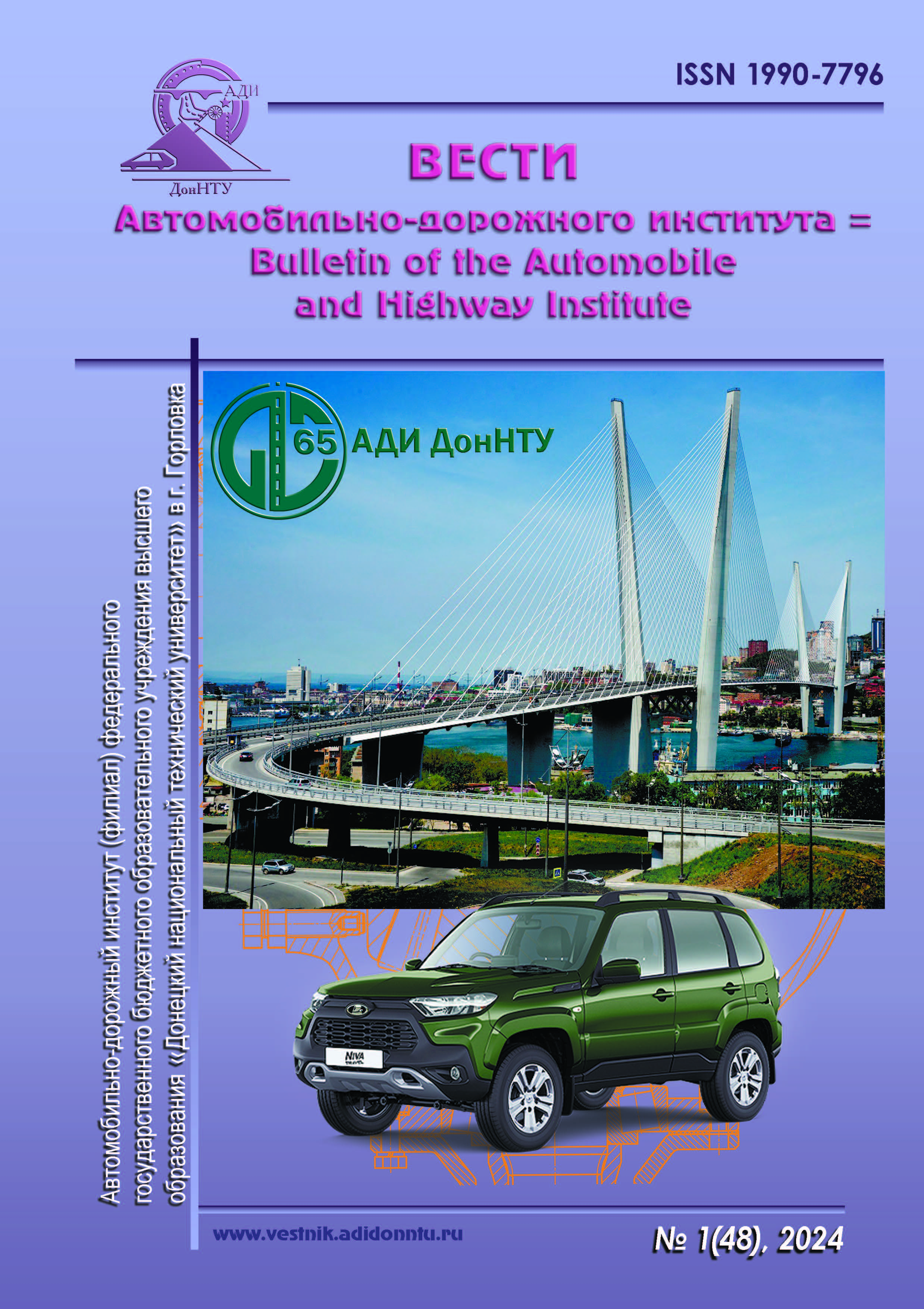Development of Capacity Calculation Methods of the First and Second Lanes of a City Street
Keywords:
CALCULATION METHOD, ROAD CAPACITY, ROAD LANE, VEHICLE MANEUVER, ROAD TRAFFIC SECTIONAbstract
The increase in traffic intensity on the streets of modern cities leads to the need to take significant measures to increase the capacity of the corresponding sections. The main measure to increase the capacity of city streets is the
construction of additional traffic lanes. Often this construction involves adding a second lane in one direction to a two-lane city street and converting it into a four-lane street.
Intensive maneuvering of vehicles when turning right, left, or stopping at the edge of the roadway leads to the creation of individual traffic conditions along the corresponding first and second lanes of the street. Queues of vehicles, both moving and stationary, lead to a decrease in the capacity of lanes and streets, to the formation of shock waves in the traffic flow and the formation of congestion.
The above reveals the relevance and need to improve the existing methodology for assigning the capacity of the corresponding traffic lanes of city streets, to the level of a calculation methodology that takes into account the individual characteristics of maneuvering vehicles within a specific street section.
The article develops methods for calculating the capacity of the first and second lanes of a city street. The methods take into account the speed of free movement of vehicles along the lanes; maximum vehicle traffic densities on lanes; average and maximum intensity of pedestrian traffic in conditions of the presence of surface pedestrian crossings; average traffic densities of traffic flows along the lanes; vehicle maneuvering characteristics when changing lanes; characteristics of vehicle maneuvering in conditions of detour of a vehicle standing at the edge of the roadway of the first lane; characteristics of the kinematics of vehicle movement when making a right turn for the first lane and when making a left turn for the second lane.
References
Лобанов, Е. М. Транспортная планировка городов / Е. М. Лобанов. – Москва : Транспорт, 1990. – 240 с. –ISBN 5-277-00375-4.
Бабков, В. Ф. Дорожные условия и безопасность движения / В. Ф. Бабков. – Москва : Транспорт, 1993. – 271 с. – ISBN 5-277-01402-0.
Кременец, Ю. А. Технические средства организации дорожного движения / Ю. А. Кременец, М. П. Печерский, М. Б. Афанасьев. – Москва : Академкнига, 2005. – 279 c. – ISBN 5-94628-111-9.
Сильянов, В. В. Транспортно-эксплуатационные качества автомобильных дорог и городских улиц / В. В. Сильянов, Э. Р. Домке. – 3-е изд., стер. – Москва : Академия, 2009. – 352 с. – ISBN 978-5-7695-5874-0.
Кисляков, В. М. Математическое моделирование и оценка условий движения автомобилей и пешеходов / В. М. Кисляков, В. В. Филиппов, И. А. Школяренко. – Москва : Транспорт, 1979. – 199 с.
Иларионов, В. А. Экспертиза дорожно-транспортных происшествий / В. А. Иларионов. – Москва : Транспорт, 1989. – 255 с. – ISBN 5-277-00374-6.
Домке, Э. Р. Расследование и экспертиза дорожно-транспортных происшествий / Э. Р. Домке. – Москва : Академия, 2009. – 288 с. – ISBN 978-5-7695-4658-7.
Вахламов, В. К. Автомобили. Конструкция и элементы расчета / В. К. Вахламов. – Москва : Академия, 2006. – 479 с. – ISBN 5-7695-2638-6.
Афанасьев, Л. Л. Конструктивная безопасность автомобиля / Л. Л. Афанасьев, А. Б. Дьяков, В. А. Иларионов. – Москва : Машиностроение, 1983. – 212 с.
Лобанов, Е. М. Проектирование дорог и организация движения с учетом психофизиологии водителя / Е. М. Лобанов. – Москва : Транспорт, 1980. – 311 с.


